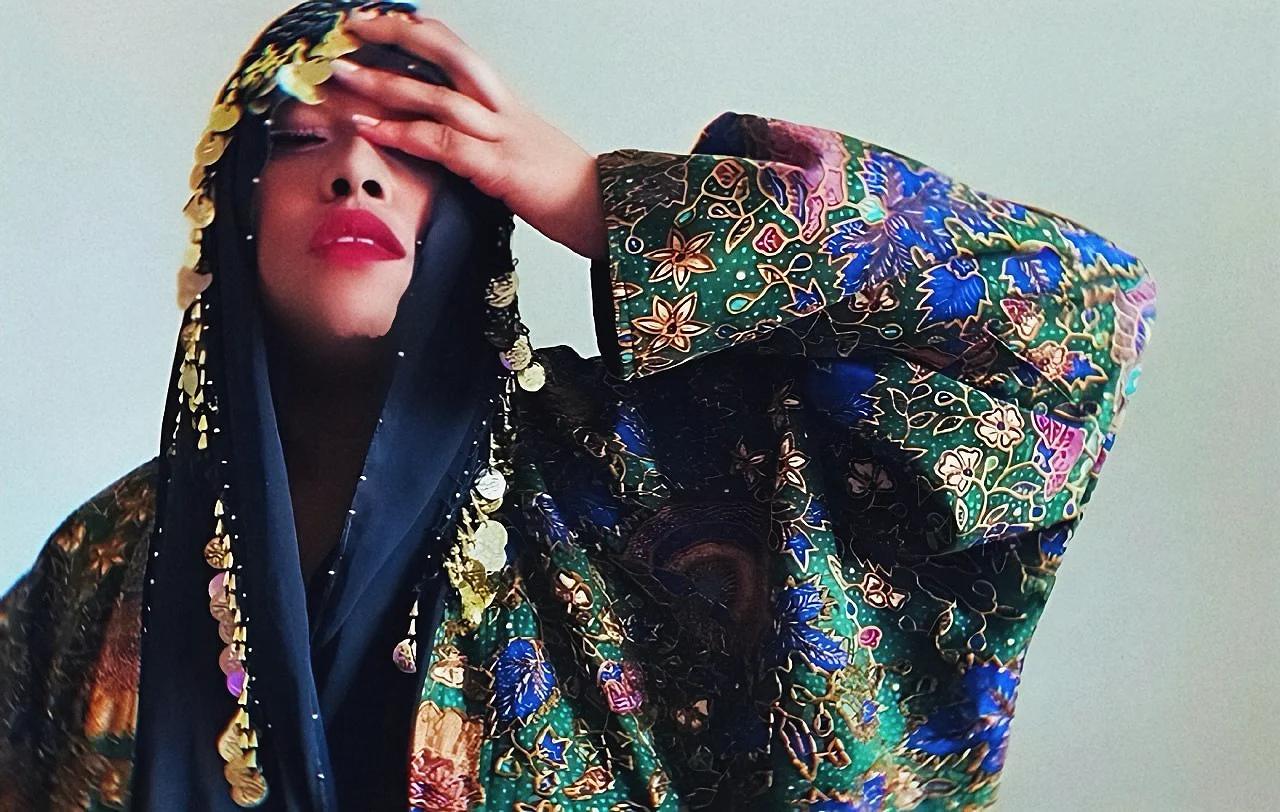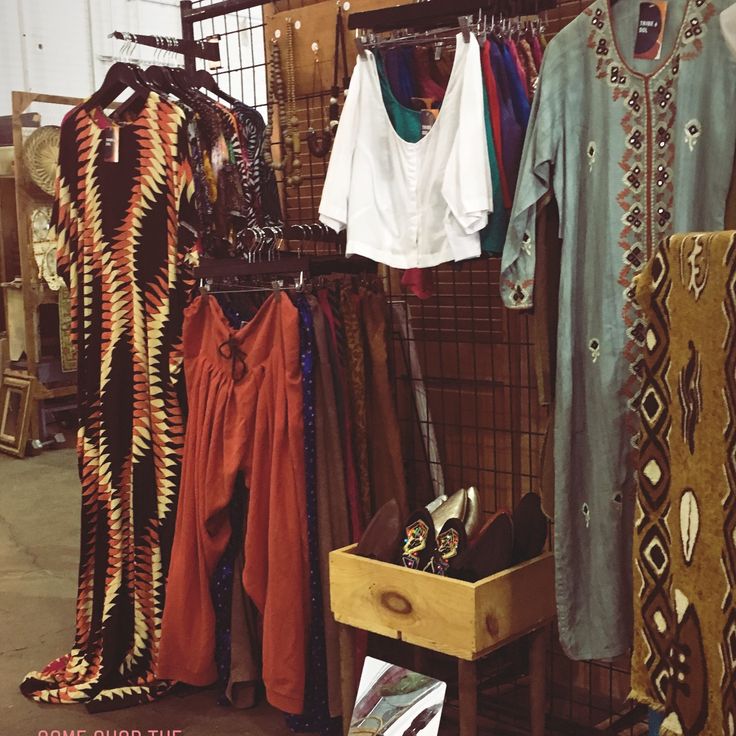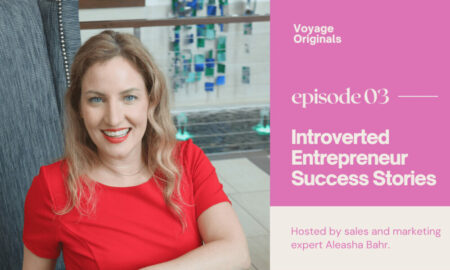

Today we’d like to introduce you to Shaundreka Aiyejina.
Shaundreka, we appreciate you taking the time to share your story with us today. Where does your story begin?
Tribe and Sol didn’t start as a business plan—it started in the aisles of thrift stores with my mother.
My mama owned a vintage shop with her best friend, and from a young age, she taught me that thrifting wasn’t just shopping—it was curation. It was seeing possibilities in what others walked past. That ’70s suede jacket? A statement piece waiting to happen. Those forgotten silk scarves? Future accessories with stories to tell.
I’m also the granddaughter of women who understood that creating with our hands is creating with our hearts. My grandmother taught me that every knot, every stitch, every piece carried intention. That foundation—watching the women in my family transform materials into meaning—planted the seeds for what Tribe and Sol would become.
I started designing jewelry in 2007, completely self-taught. Then clothing in 2010. At first, I was just experimenting, using whatever resources I had available. But what emerged was a distinct aesthetic—Afro-Bohemian, culturally rich, rooted in vintage but reimagined for today.
By 2013, I officially launched Tribe and Sol. The name itself reflects the duality: Tribe (community, ancestry, connection) and Sol (light, energy, the sun that illuminates the work and the soul that drives it). I’ve been featured in magazines, sold pieces in boutique hotels like Hotel San Jose here in Austin, and built a community of what I call “story keepers”—women who understand that what we wear carries forward the wisdom of generations.
The journey hasn’t been linear. There were years where I kept chasing new ideas, thinking I needed to reinvent myself to stay relevant. But the breakthrough came when I realized: God had already given me the gifts. Day of Discovery—my thrift hunting series. Take It or Leave It—where my community votes on what I should buy. These weren’t just content ideas; they were the foundation of my business model. I just needed to stop abandoning what was working and commit to deepening it.
Six months ago, I took time off to focus on my health. During that season, I had a reckoning with the Parable of the Talents—I realized I’d been burying my gifts out of fear instead of investing them. I wasn’t squandering out of laziness; I was running from my own brilliance because I didn’t trust it was enough.
Now, I’m back.
Clear. Focused. Grounded.
Today, Tribe and Sol operates across multiple channels: live selling on WhatNot (my show is called Bohemian Bodega), Instagram story sales, pop-up markets, and my website tribeandsol.com. I source vintage pieces from across the globe—Africa, South Asia, Japan, Mexico—and either curate them as-is or transform them into Made-From-Vintage (MFV®) pieces. Every item tells a cultural story. Every purchase connects someone to ancestral traditions.
But more than the business model, Tribe and Sol is about self-discovery. I help women remember they were made to be celebrated, not just seen. Style, for me, has always been a sanctuary—a space where movement meets meaning, where the physical act of getting dressed becomes spiritual practice.
I’m not just a vintage curator or jewelry designer. I’m a keeper of sacred threads, honoring the hands that came before me while teaching new hands to carry the craft forward. That’s the legacy I’m building—one piece, one story, one woman at a time.
We all face challenges, but looking back would you describe it as a relatively smooth road?
Not even close to smooth. But I’ve learned that the rough roads are where you actually become who you’re meant to be.
One of my biggest struggles has been creative self-sabotage. I’d get an idea from God—like Day of Discovery or Take It or Leave It—and it would start working. People would engage, sales would come. But instead of staying the course, I’d convince myself I needed something new, something different. I’d abandon what was working before it had time to really take root. It took me years to realize this was fear disguised as creativity. I was afraid that what I had wasn’t impressive enough, so I kept digging up seeds to check if they were growing instead of just watering them.
Balancing multiple revenue streams as a solo founder has been another challenge. I’m a one-woman operation—I source the pieces, create the designs, photograph everything, manage social media, run live sales, ship orders, handle customer service. Some weeks I’ve worked myself to exhaustion trying to be everywhere at once. Learning to create systems and rhythms instead of just hustle has been crucial. I had to accept that sustainable success doesn’t come from doing everything; it comes from doing the right things consistently.
Health forced me to pause six months ago. I’d been pushing so hard that my body said “enough.” That break felt like failure at first—like I was letting people down, losing momentum. But it was actually the most important season of my business. It gave me space to get clear on what Tribe and Sol actually is, what my gifts are, and how to steward them without burning out. Sometimes the best thing you can do for your business is stop running it for a minute and remember why you started.
There’s also been the struggle of explaining what I do in a world that wants easy categories. People would ask, “So you sell vintage?” Yes, but not just that. “Oh, you make jewelry?” Yes, but it’s more than that. Tribe and Sol exists at this intersection of vintage curation, cultural storytelling, spiritual practice, and self-discovery. For a long time, I thought I needed to pick one lane. Now I understand that the intersection IS the lane. My customers aren’t confused—they get it. They’re the ones who understand that fashion can be ministry.
Pricing my work appropriately has been an ongoing lesson. When you create from a place of love and purpose, it’s easy to undervalue what you make. I had to learn that honoring the craft—the time, the skill, the sourcing, the cultural knowledge—means charging what the work is actually worth. Not what I think people can afford, not what makes me comfortable, but what reflects the true value of keeping traditions alive.
And honestly, trusting the timing has been hard. There have been seasons where I watched other brands blow up overnight while I was still building slowly, methodically. I had to make peace with the fact that my path isn’t about virality or shortcuts. It’s about legacy. The women I’m called to serve aren’t looking for fast fashion or trends. They’re looking for pieces with soul. That kind of customer takes time to find, and they’re worth the wait.
The road hasn’t been smooth. But every struggle taught me something I needed to know. And I’m still here—not because it was easy, but because I finally learned to stop running from what God put in my hands.
As you know, we’re big fans of Tribe and Sol. For our readers who might not be as familiar what can you tell them about the brand?
Tell us more about your business. What should we know? What do you specialize in? What sets you apart?
Tribe and Sol is an Afro-Bohemian Vintage and Made-From-Vintage (MFV®) brand, but at its core, we’re cultural storytellers who happen to work through fashion.
What We Do:
I source vintage pieces from across the globe—West Africa, South Asia, Japan, Mexico, and beyond—then either curate them in their original form or transform them into contemporary designs. Every piece of jewelry and clothing I offer carries a cultural story. I specialize in vintage textiles from the 1960s-1990s, handcrafted jewelry featuring beadwork and traditional techniques, and reimagined vintage pieces that honor their origins while speaking to today’s woman.
My collections have names with meaning: Senufo Strands (inspired by West African symbolism), Fula Woven (nomadic textile traditions), Kantha Kinfolk (celebrating the circular economy of creativity), Bété Bamboo (wood jewelry connecting us to the earth). Each collection ties back to specific cultural traditions and artisan techniques.
What Sets Us Apart:
Unlike typical vintage shops that just resell clothes, I teach the cultural context behind every piece. When you shop with me, you’re not just buying a 1970s Nigerian dashiki—you’re learning about how it became a symbol of Black pride and revolution. You’re understanding the sacred geometry in the patterns, the meaning behind the colors, the hands that first created these textiles.
I also operate across multiple platforms in ways that build community: live selling on WhatNot every Friday (my show is Bohemian Bodega), Instagram story sales where my audience votes on what I should buy through my “Take It or Leave It” series, pop-up markets, and my website. My content series—Day of Discovery, The Stories We Wear, Keepers—aren’t just marketing; they’re educational experiences that connect people to global heritage.
And this might sound unusual, but I position style as a spiritual practice. For me, getting dressed isn’t superficial—it’s sanctuary. It’s communion with self and God. My customers aren’t just buying clothes; they’re exploring self-discovery through what they wear. I help women transition from dressing to be “seen” (performing, seeking validation, shrinking) to dressing to be “celebrated” (resting in belovedness, adorned with purpose).
What I’m Most Proud Of:
Brand-wise, I’m most proud of building a community of “story keepers”—women who understand that what we wear carries forward the wisdom of generations. They don’t just buy from me; they become guardians of culture. They tag me in photos of how they’re styling pieces, they share their own heritage stories, they ask thoughtful questions about the origins of patterns and materials. That sense of belonging, that “I found my people” feeling—that’s what I’m building, and it’s more valuable than any sales number.
I’m also proud that Tribe and Sol celebrates ALL bodies. Every body is holy ground. I create and curate size-inclusive pieces because beauty doesn’t have a size limit, and neither does the right to feel celebrated in what you wear.
What I Want Readers to Know:
Tribe and Sol isn’t fast fashion. We’re forever fashion—pieces meant to be passed down, not thrown away after a season. When you invest in my pieces, you’re voting for sustainability, cultural preservation, and artisan support.
I want readers to know that shopping with me is different. You’re not walking into a sterile boutique or scrolling through an algorithm-driven feed. You’re joining live sales every Friday where I tell you exactly where I found each piece and why it matters. You’re engaging with content that teaches you to see vintage differently. You’re becoming part of a tribe that values authenticity over trends.
If you’re the woman who’s tired of clothes that all look the same, who wants her wardrobe to reflect her values, who believes that fashion can be meaningful—Tribe and Sol is for you. If you’re building a legacy wardrobe full of pieces with soul, pieces you’ll treasure and eventually pass down—you’re my person.
And here’s what I really want people to understand: I’m not just a business owner. I’m the granddaughter of makers, the daughter of a vintage curator, and I carry that lineage forward with every piece I touch. This is my calling. My ministry. My way of honoring the women who came before me while creating space for the women still becoming.
You can find us at tribeandsol.com, @tribeandsol on Instagram, and live on WhatNot https://www.whatnot.com/user/tribeandsol every Friday for Bohemian Bodega. Come be a story keeper with us.
Where do you see things going in the next 5-10 years?
I see a massive shift happening—not just in vintage fashion, but in how people relate to clothing altogether.
The Death of Disposable Fashion:
Fast fashion’s reckoning is coming. Consumers are waking up to the environmental and human cost of cheap, trendy clothes. Over the next decade, I believe we’ll see a fundamental values shift where people care more about where their clothes come from than what influencer is wearing them. The question won’t be “Is this on trend?” but “Can I pass this down?” Vintage and made-from-vintage brands like mine are positioned perfectly for this shift because we’ve always operated on these principles.
Cultural Authenticity Will Matter More:
People are tired of surface-level “diversity” that’s just aesthetic without substance. They want to know: Who made this? What does this pattern actually mean? Am I appropriating or appreciating? The brands that will thrive are the ones who can tell authentic cultural stories and honor traditions—not just slap a print on a t-shirt and call it multicultural. Education will become as important as the product itself. This is exactly what Tribe and Sol has been building—every piece comes with its cultural story, its lineage, its meaning. I’m not just selling a vintage dashiki; I’m teaching why it matters.
Community Over Consumption:
I’m already seeing this with my “story keepers.” People don’t just want to buy—they want to belong. They want to be part of something meaningful. The future of retail isn’t transactional; it’s relational. Live selling platforms like WhatNot are exploding because they create real-time community. Pop-up markets are thriving because people crave in-person connection. The brands that build genuine community will outlast the ones that just have good Instagram feeds. That’s why Tribe and Sol operates the way we do—through live sales every Friday where people can ask questions, hear stories, and feel like they’re part of something bigger than a transaction.
The Rise of “Heirloom Mindset”:
I believe we’re moving toward what I call the “heirloom mindset”—people building wardrobes they can pass down instead of closets they purge every season. Vintage will stop being seen as “used clothes” and start being valued as investment pieces with history. The narrative will shift from “I got this for $10 at a thrift store” to “This piece has been worn across three decades and two continents—and now it’s mine to carry forward.” This is the legacy I’m building with Tribe and Sol—pieces meant to outlast trends and become tomorrow’s treasures.
Tech Meeting Tradition:
Live selling, virtual styling sessions, augmented reality try-ons for vintage pieces—technology will make vintage more accessible while storytelling will keep it human. I see a future where I can show someone a 1970s caftan on a live stream, tell them its full cultural history, and they can visualize it in their own closet before buying. The tech serves the story, not replaces it. Tribe and Sol is already doing this through our multi-platform approach—WhatNot for live interaction, Instagram for daily storytelling, our website for deeper dives into collections.
The Indie Maker Economy:
Platforms are democratizing access. A solo founder like me can reach thousands of people without needing a storefront or massive capital. Over the next 5-10 years, I think we’ll see more independent makers thriving—not despite being small, but because being small allows for authenticity, flexibility, and direct community connection that big brands can’t replicate. Tribe and Sol proves this model works—I’m one woman honoring ancestral traditions, and my community values that intimacy. They know when they buy from me, they’re supporting a calling, not a corporation.
What Concerns Me:
AI and mass production getting better at faking authenticity. We’ll have to be vigilant about protecting true cultural artistry from being co-opted and mass-produced cheaply. The brands that survive will be the ones who can prove their authenticity—show the receipts, tell the real stories, build genuine relationships.
What Excites Me:
A generation of conscious consumers who understand that what they wear is a vote for the world they want to live in. That’s who Tribe and Sol serves. And they’re not going anywhere—they’re only growing. Over the next 5-10 years, I see Tribe and Sol expanding into more retail partnerships with boutiques and galleries that share our values, creating deeper educational content about cultural preservation, and continuing to build a community of story keepers who understand that fashion can be ministry.
The future of this industry isn’t about who can produce the most. It’s about who can create the most meaning. And that’s exactly what Tribe and Sol was built for.
Contact Info:
- Website: https://www.tribeandsol.com
- Instagram: https://www.instagram.com/tribeandsol
- Facebook: https://www.facebook.com/tribeandsol/
- LinkedIn: https://www.linkedin.com/company/tribe-and-sol/
















